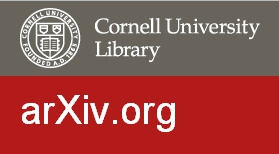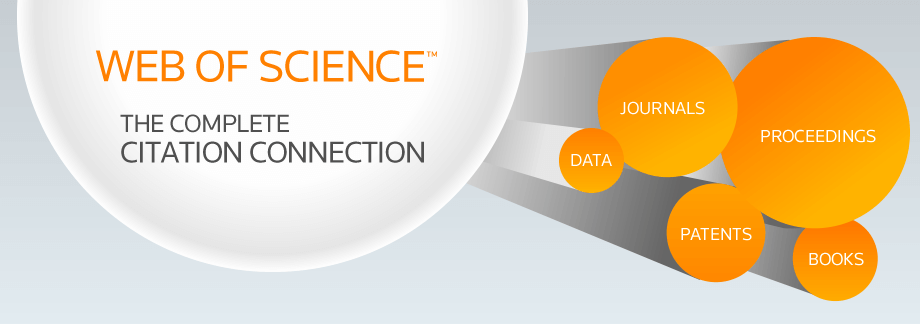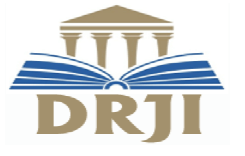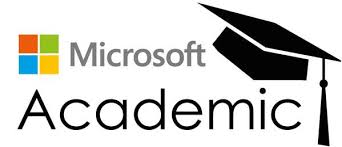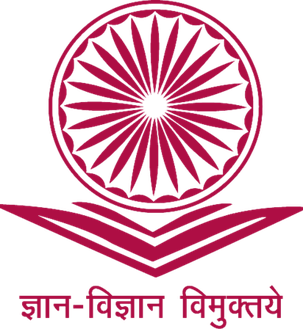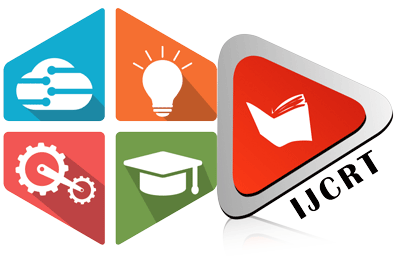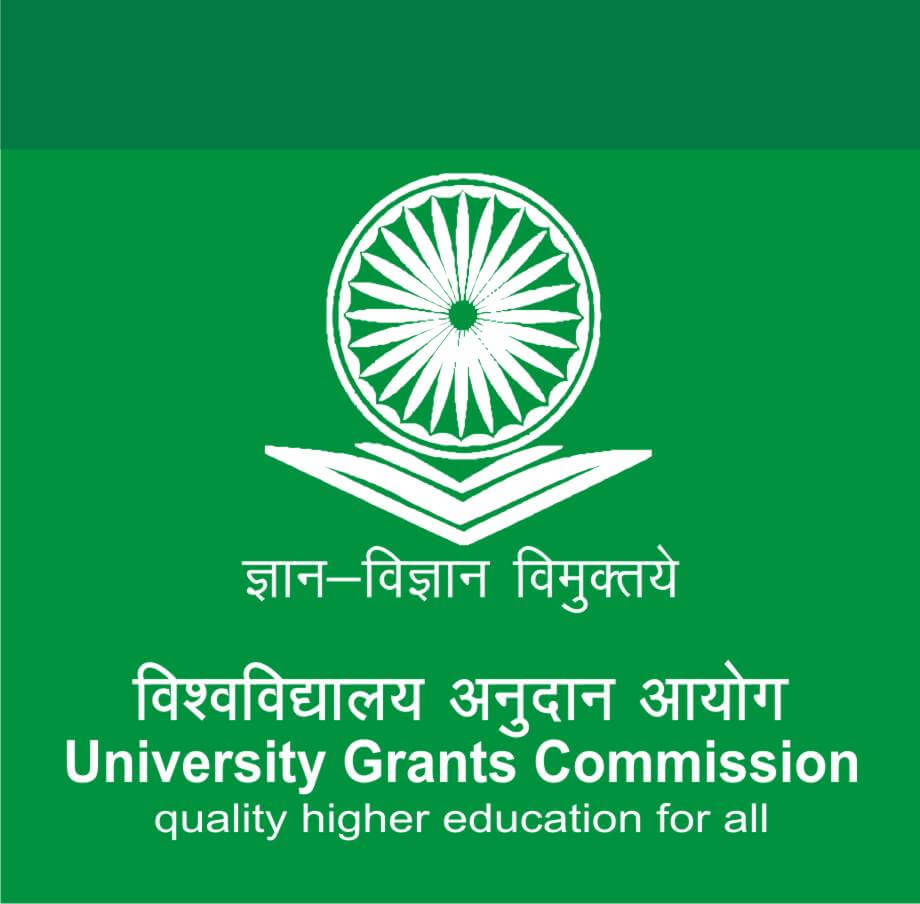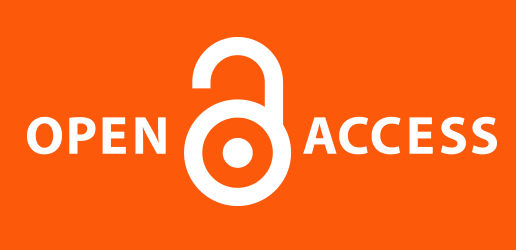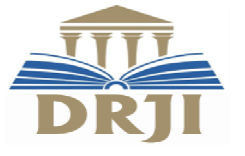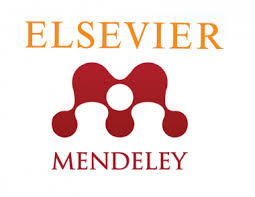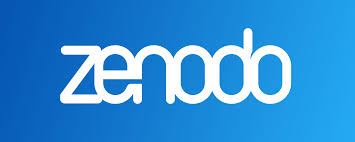INTERNATIONAL JOURNAL OF CREATIVE RESEARCH THOUGHTS - IJCRT (IJCRT.ORG)
International Peer Reviewed & Refereed Journals, Open Access Journal
IJCRT Peer-Reviewed (Refereed) Journal as Per New UGC Rules.
ISSN Approved Journal No: 2320-2882 | Impact factor: 7.97 | ESTD Year: 2013
Call For Paper - Volume 13 | Issue 12 | Month- December 2025
Scholarly open access journals, Peer-reviewed, and Refereed Journals, Impact factor 7.97 (Calculate by google scholar and Semantic Scholar | AI-Powered Research Tool) , Multidisciplinary, Monthly, Indexing in all major database & Metadata, Citation Generator, Digital Object Identifier(CrossRef DOI)
Contact Us Click Here
WhatsApp Contact Click Here
Volume 13 | Issue 10
| IJCRT Journal front page | IJCRT Journal Back Page |
Paper Title: REVIEW ON ECO FRIENDLY CROP CUTTING MACHINE
Publisher Journal Name: IJCRT
Your Paper Publication Details:
Published Paper ID: - IJCRTBH02040
Register Paper ID - 295173
Title: REVIEW ON ECO FRIENDLY CROP CUTTING MACHINE
Author Name(s): Prof. Husain Shaikh, Karan Akaram Gosavi, Hritik Rajendra Mhatre, Saurabh Balasaheb Waghole, Shyam Mahadev Maske
Publisher Journal name: IJCRT
Volume: 13
Issue: 10
Pages: 287-294
Year: October 2025
Downloads: 111
Abstract
A crop cutter is a machine that uses sliding blades to cut a lawn at an even length. Even more sophisticated devices are there in every field. Power consumption becomes essential for future. Crop cutter is a very useful device which is very simple in construction. It is used to maintain and upkeep lawns in gardens, schools, college's etc. We have made some changes in the existing machine to make its application easier at reduced cost. Our main aim in pollution control is attained through this. Unskilled operation can operate easily and maintain the lawn very fine and uniform surface look. In our project, crop cutter issued to cut the different crops for the different application. Today, Agriculture especially in India need to concentrate in some aspects such as how to increase the productivity and profit, how to reduce the cost and how to solve the problem comes from workers. To overcome these, a new motorized cutter is fabricated specially for cutting various crop varieties during the time of harvesting and named as an ultraportable crop cutter. It comprises three criterions such as "easy to fabricate, low cost and light weight". With this Ultraportable Crop Cutter, the entire problem can be solved easily. There are some procedures involved in fabricating this device such as fabricating the prototype using suitable material and test the functioning of this machine. So the objectives are to fabricate and test the performance of the prototype of a motorized crop cutter for harvesting the crop.
Licence: creative commons attribution 4.0
License
Keywords
REVIEW ON ECO FRIENDLY CROP CUTTING MACHINE
License
Paper Title: REVIEW ON DESIGN AND ANALYSIS OF SOLAR WIND MILL
Publisher Journal Name: IJCRT
Your Paper Publication Details:
Published Paper ID: - IJCRTBH02039
Register Paper ID - 295174
Title: REVIEW ON DESIGN AND ANALYSIS OF SOLAR WIND MILL
Author Name(s): Dr. Harish Harsurkar, Aishwarya deepak vidhate, Prerana somnath raut, Pooja dashrath bandalkar, Sandhya murlidhar lokhande
Publisher Journal name: IJCRT
Volume: 13
Issue: 10
Pages: 280-286
Year: October 2025
Downloads: 98
Abstract
Considering the energy security concern for and commitment to a 'Low Carbon Growth Strategy', the 12th Five Year plan of the country included plans to ensure sustainable development of the power sector. Due to the RE impetus an increase in the development of medium to high density wind and solar farms in India is expected. In this scenario it becomes important and necessary to revisit the impacts of RE projects in the neighborhood where these projects are coming up. Thus, this study is commissioned by MNRE to assess the environmental and socio-economic impacts of RE projects in India, particularly from solar PV and on-shore wind farms in hybid mode.Hence to test this we have tried to fabricate a hybrid solar cum wind mill power plant model.
Licence: creative commons attribution 4.0
License
Keywords
REVIEW ON DESIGN AND ANALYSIS OF SOLAR WIND MILL
License
Paper Title: Review on Design and Analysis of Pick and Place Robot
Publisher Journal Name: IJCRT
Your Paper Publication Details:
Published Paper ID: - IJCRTBH02038
Register Paper ID - 295175
Title: REVIEW ON DESIGN AND ANALYSIS OF PICK AND PLACE ROBOT
Author Name(s): Dr. Harish Harsurkar, Powar Dhanashri vikas, Birajdar Shivaraj Mahadeo, Shendage Hanmant Dattatray, Shaikh Humera Rajjak
Publisher Journal name: IJCRT
Volume: 13
Issue: 10
Pages: 272-279
Year: October 2025
Downloads: 95
Abstract
This system is very beneficial in areas where there is high risk for humans to enter. This system makes use of robotic arm as well as robotic vehicle which helps not only to enter an area involving high risk but also to pick whatever object it wants to. The system also includes night vision camera which will not only allow viewing whatever will be recorded in day time but also during night. The whole system is controlled via RF remote. The system sends commands to the receiving circuit mounted on the vehicle through push buttons. The receiving circuit involves 8051 microcontroller and a receiver which receives commands sent by the transmitting circuit. At first the system is set to control the movement of vehicle. In order to set the system in a mode that operates the arm. At first the user needs to press the push buttons for moving the vehicle in whichever direction it wants i.e. forward, backward, right or left direction. In order to make the arm movement, the user needs to long press the forward and backward push buttons. Thus this system makes use of camera, robotic arm and robotic vehicle to enter a high risk involving area and also to pick, move and drop an object as well as record the place wherever the system goes and later view it for future reference.
Licence: creative commons attribution 4.0
License
Keywords
Review on Design and Analysis of Pick and Place Robot
License
Paper Title: REVIEW ON AUTOMATIC FEEDING SYSTEM FOR ANIMAL
Publisher Journal Name: IJCRT
Your Paper Publication Details:
Published Paper ID: - IJCRTBH02037
Register Paper ID - 295176
Title: REVIEW ON AUTOMATIC FEEDING SYSTEM FOR ANIMAL
Author Name(s): Prof Husain Shaikh, Tejas Dattaram khochade, Rahul Ramesh Ghawali, Om Rajesh Mhadam, Badal Dilerakha Lende
Publisher Journal name: IJCRT
Volume: 13
Issue: 10
Pages: 263-271
Year: October 2025
Downloads: 86
Abstract
Conventionally the feeding of the cattle is manual which is time consuming. In this project, an automatic cattle feeding system is introduced where food feeder follows the path through a pre-determined distance and places the feed to the cattle by the side of the feed fence. The prototype is developed using screw conveyor mechanism for the operation of feed mechanism with certain time space. The motors are interfaced to operate in either direction. A belt conveyor is operated by a DC motor to feed the cattle at certain time space. This mechanism is basically controlled by motor
Licence: creative commons attribution 4.0
License
Keywords
REVIEW ON AUTOMATIC FEEDING SYSTEM FOR ANIMAL
License
Paper Title: REVIEW ON CRANK PEDAL OPERATED WASHING MACHINE
Publisher Journal Name: IJCRT
Your Paper Publication Details:
Published Paper ID: - IJCRTBH02036
Register Paper ID - 295177
Title: REVIEW ON CRANK PEDAL OPERATED WASHING MACHINE
Author Name(s): Prof. Tanuja Hulavale, Aryan Hemant Patil, Arvind Ravalu Patil, Prasad Shinde, Shivkrushna Parkhe
Publisher Journal name: IJCRT
Volume: 13
Issue: 10
Pages: 248-262
Year: October 2025
Downloads: 77
Abstract
Pedal powered washing machine (PPWM) is a low-cost washing machine made up of easily and readily available scrap parts in daily life. It is a machine which generates power through pedaling and with a drive mechanism, converts the pedaling motion into required rotary motion of the drum, innovation lies in simple design, without use of inexpensive parts. We intends to directly address the problems faced in washing clothes, and thus have developed a new design for easy effort in washing, rinsing and drying clothes. In our country where approximately 70% of population is living with very poor economic status those people cannot have a washing machine because of cost constraints. The present work is an attempt to develop a concept to make a cloth washing mechanism which can meet our requirement of above mentioned 70% population. PPWM is completely new concept, which in its one laundry cycle does washing, rinsing and partial drying of cloths similar to that of automatic washing machine available in market
Licence: creative commons attribution 4.0
License
Keywords
Laundry cycle, Washing, Rinsing, Drying,
License
Paper Title: REVIEW ON AUTOMATIC IRRIGATION SYSTEM BASED ON SOLAR ENERGY
Publisher Journal Name: IJCRT
Your Paper Publication Details:
Published Paper ID: - IJCRTBH02035
Register Paper ID - 295178
Title: REVIEW ON AUTOMATIC IRRIGATION SYSTEM BASED ON SOLAR ENERGY
Author Name(s): Prof. Husain Shaikh, Chaitanya Suresh Dhokane, Abhijeet Yuvraj Devtwal, Asha Shankar Dube, Dhanashri Dinkar Patil
Publisher Journal name: IJCRT
Volume: 13
Issue: 10
Pages: 238-247
Year: October 2025
Downloads: 82
Abstract
This paper discusses innovative technology in terms of various ways to irrigate agricultural land using solar power. Agriculture is the central heart for the nation and farmers. Nowadays Agriculture is decreasing day by day because of reduction of water and it consumes more electricity and loss of water in many fields like irrigation fields here because the overflow of water in irrigating land results in loss of water and also it will make plants decay. To control this cause we are using renewable energy by means of solar panels along with a pump and monitoring control system with four sensors. With the help of this system we are able to reduce, save and consumption of water will be in the limit without loss of water. This system performs automatically because an automatic monitoring system is provided.
Licence: creative commons attribution 4.0
License
Keywords
Automatic irrigation system, Microcontroller, Soil Moisture, Rain, Passive infrared and Temperature Sensors.
License
Paper Title: REVIEW ON REMOTE CONTROLLED PNEUMATIC DOOR OPENING
Publisher Journal Name: IJCRT
Your Paper Publication Details:
Published Paper ID: - IJCRTBH02034
Register Paper ID - 295179
Title: REVIEW ON REMOTE CONTROLLED PNEUMATIC DOOR OPENING
Author Name(s): Dr. Harish Harsurkar, Vagge Ramesh Shrimant, Ingle Sujit Baban, Patil Shivkant Rajgonda, Jadhav Nilesh Annasaheb
Publisher Journal name: IJCRT
Volume: 13
Issue: 10
Pages: 226-237
Year: October 2025
Downloads: 76
Abstract
This new feature deals with the actuating of the bus doors automatically using advanced timers, relays & specialized microprocessors to assist the driver to close these doors without closing in on the passengers effectively trapping them between powerful pneumatic doors as opposed with the existing manually operated technology where these accidents are prevailing as happenstance all-around and the country and the driver has to react to it manually, after realizing what is happening to their passenger because of a seemingly extenuated problem. Thus adding this piece of hardware to an existing component not only improves safety and assurance to property and personnel but takes off one more thing the driver has to worry about extensively while driving a multi axle vehicle carrying more than fifty passengers. This also allows passengers to have more feasible egress during an event of any emergencies including but not limited to smokes, collisions etc. After many avenues of analysis it is submitted for the future reference and use of next generation vehicles.
Licence: creative commons attribution 4.0
License
Keywords
REVIEW ON REMOTE CONTROLLED PNEUMATIC DOOR OPENING
License
Paper Title: REVIEW ON AIR OPERATED VEHICLE
Publisher Journal Name: IJCRT
Your Paper Publication Details:
Published Paper ID: - IJCRTBH02033
Register Paper ID - 295180
Title: REVIEW ON AIR OPERATED VEHICLE
Author Name(s): Dr. Harish Harsurkar, Rasika Balwant Pasare, Sachin Maruti Memane, Sarswati Shankar Malgudri, Prathmesh Dattatray Mane
Publisher Journal name: IJCRT
Volume: 13
Issue: 10
Pages: 216-225
Year: October 2025
Downloads: 87
Abstract
Nowadays, automobiles consume a large number of fossil fuels. However, the consumption of fossil fuels has brought many serious environmental problems, such as global warming, ozone layer depletion and fine particulate matter. To avoid such environmental problems, renewable energy has been applied to automobiles. An air-powered engine of a renewable energy vehicle is introduced. To lay a foundation for the optimization of compressed air engine (CAE), a physical model of compressed air engine (CAE) is established with cam which controls compressed air charge or discharge cylinder. To obtain performance of the CAE, a prototype CAE system is set up. The output torque, power and efficiency are obtained through experimental study. The results show that the prototype of CAE has a good economic performance under low speed and when the supply pressure is 2 MPa, the maximum output power is 1.92 kW; the maximum output torque is 56.55 N?m; and the maximum efficiency is 25%. This research can be referred to in the optimization of air-powered engine.
Licence: creative commons attribution 4.0
License
Keywords
REVIEW ON AIR OPERATED VEHICLE
License
Paper Title: REVIEW ON FOOT STEP OR SPEED BREAKER ELECTRICITY GENERATION
Publisher Journal Name: IJCRT
Your Paper Publication Details:
Published Paper ID: - IJCRTBH02032
Register Paper ID - 295182
Title: REVIEW ON FOOT STEP OR SPEED BREAKER ELECTRICITY GENERATION
Author Name(s): Prof.Tanuja Hulavale, Nikalaje Sachin Gorakhnath, Borade Vikas Yadav, Patil Shubham Suresh, Kamble Ruturaj Shashikant
Publisher Journal name: IJCRT
Volume: 13
Issue: 10
Pages: 206-215
Year: October 2025
Downloads: 86
Abstract
This project harvests energy from speed breaker by making gear arrangement and using electronic gadgets. Large amounts amount of electricity can be generated saving lot of Money. And if implemented will be very beneficial for Government. When vehicle is in motion it produces various forms of energy like, due to friction between vehicle's wheel and road i.e. rough surface HEAT Energy is produced, also when vehicle traveling at high speed strikes the wind. The principle involved is POTENTIAL ENERGY TO ELECTRICAL ENERGY CONVERSION. There is a system to generate power by converting the potential energy generated by a vehicle going up on a speed breaker into kinetic energy. When the vehicle moves over the inclined plates, it gains height resulting in increase in potential energy, which is wasted in a conventional rumble strip. When the breaker comes down, they crank a lever fitted to a ratchet-wheel type mechanism (a angular motion converter) which in turn rotates a geared shaft loaded with recoil springs. The output of this shaft is coupled to a dynamo to convert kinetic energy into electricity
Licence: creative commons attribution 4.0
License
Keywords
REVIEW ON FOOT STEP OR SPEED BREAKER ELECTRICITY GENERATION
License
Paper Title: REVIEW ON WIND OPERATED SAND SEIVERING MACHINE
Publisher Journal Name: IJCRT
Your Paper Publication Details:
Published Paper ID: - IJCRTBH02031
Register Paper ID - 295183
Title: REVIEW ON WIND OPERATED SAND SEIVERING MACHINE
Author Name(s): Prof.Husain Shaikh, Prathamesh Mali, Punesh Katre, Prashant Patle, Mansi Borse
Publisher Journal name: IJCRT
Volume: 13
Issue: 10
Pages: 195-205
Year: October 2025
Downloads: 97
Abstract
A sieve is a device for separating wanted elements from unwanted material or for characterizing the particle size distribution of a sample, typically using a woven screen such as a mesh or net. This project focuses in design, fabrication of the mechanical part of machine and the system of the wind operated sieve machine. To achieve this project objective, this sieve machine body structure and mechanical system needs to concern some other criteria such as strength, safety and ergonomic design. Depending on their size the individual particles either pass through the sieve mesh or retained on the sieve surface. There are different machines that are being used for sand sieving processes. In our project the process will takes place automatically. Thus, the time consumed during the whole process is reduced
Licence: creative commons attribution 4.0
License
Keywords
REVIEW ON WIND OPERATED SAND SEIVERING MACHINE
License
Paper Title: REVIEW ON MOTORIZED SAND FILTERING MACHINE
Publisher Journal Name: IJCRT
Your Paper Publication Details:
Published Paper ID: - IJCRTBH02030
Register Paper ID - 295184
Title: REVIEW ON MOTORIZED SAND FILTERING MACHINE
Author Name(s): Prof. Tanuja Hulavale, Abhisek Mishra, Rushikesh Pardeshi, Anuz Zuzam, Vishal Erande, Sadanand Gawade
Publisher Journal name: IJCRT
Volume: 13
Issue: 10
Pages: 186-194
Year: October 2025
Downloads: 56
Abstract
A demonstration of design and fabrication of motorized sand filter system is done. As sand is used in construction, manufacturing and many industrial purposes, it needs to be filtered and separated from unneeded particles, stones and other large particles before put to use. This system puts forward a fully automated sand filtering and separator that automatically filters the sand poured on it. For this a motorized shaft is mounted horizontally on the mounts. The shaft is connected to a filter frame with a mesh below and enclosed frame on sides which operates the motor when switched on.
Licence: creative commons attribution 4.0
License
Keywords
REVIEW ON MOTORIZED SAND FILTERING MACHINE
License
Paper Title: REVIEW ON RAILWAY TRACK CRACK DETECTION
Publisher Journal Name: IJCRT
Your Paper Publication Details:
Published Paper ID: - IJCRTBH02029
Register Paper ID - 295185
Title: REVIEW ON RAILWAY TRACK CRACK DETECTION
Author Name(s): Prof. Tanuja Hulavale, Gawai Yugant Sanjeev, Jyote Vaibhav Virbhadra, Gurav Rutik Ramesh, Gawade Somnath Arjun
Publisher Journal name: IJCRT
Volume: 13
Issue: 10
Pages: 174-185
Year: October 2025
Downloads: 39
Abstract
In India, railway transportation service is the cheap and the majority convenient mode of passenger transport and also for long-distance and suburban traffic. The main cause of the accidents happened in railways are railway track crossing and unrevealed crack in railway tracks. Therefore, there is a need to have new technology which will be robust, efficient, and stable for both crack detection in railway track as well as to object detection. This project discusses a Railway track crack detection using sensors and is a dynamic approach that combines the use of a GPS tracking system to send alert messages and the geographical coordinate of location. Arduino Microcontrollers used to control and coordinate the activities of this device. The Indian Railways consists one of the largest railway networks in the whole world, crises-crossing over 1, 15,000 km in distance, all over India. However, with regard to reliability, dependability, and passenger safety of Indian Railways is not up to the global standards. Among other factors, the cracks are developed on the railway tracks due to absence of the inefficient timely detection Our work involves a project that aims of designing a railway crack detection system (RCDS) using an Ultrasonic Sensor, The GSM (Global System for Mobile Communications), GPS (Global Positioning System) and Arduino based module whose implementation is an efficient method of detecting the cracks which are present in the tracks and thus avoiding derailment of the trains. In this project, we are using an ultrasonic sensor which is used to find the crack in the railway track And also capable of alerting the authorities in the form of SMS messages along with location by using GPS and GSM modules
Licence: creative commons attribution 4.0
License
Keywords
REVIEW ON RAILWAY TRACK CRACK DETECTION
License
Paper Title: REVIEW ON MOTORIZED SHUTTER WITH THEFT ALARM
Publisher Journal Name: IJCRT
Your Paper Publication Details:
Published Paper ID: - IJCRTBH02028
Register Paper ID - 295186
Title: REVIEW ON MOTORIZED SHUTTER WITH THEFT ALARM
Author Name(s): Dr.Harish Harsurkar, Suraj Laxman Pawar, Prasanna dattatrey Pawar, Aditya Panjab mahalle, Pratik jeevan Jadhav
Publisher Journal name: IJCRT
Volume: 13
Issue: 10
Pages: 166-173
Year: October 2025
Downloads: 40
Abstract
Roller shutters are usually defined as a vertical revolving barrier at the entrance of building or room, traditionally made of metal or wood, which its leafs, curtains or slats will be rolled upwards during its opening position and downwards during closing position. Due to the advancement of new inventions, roller shutters are also made of various materials such as aluminum, plastic, coupled with other insulations. The advantage of using roller shutter is for space efficiency and to provide a clear unobstructed opening, while completely securing and compartmentalizing the entrance hole during closure. it is a type of door or window shutter consisting of many horizontal slats (or sometimes bars or webbed systems) hinged together. The shutter is raised to open it and lowered to close it. Roller shutters have many applications, including doors for garages, warehouses, shops, etc. These shutters over the years, if not maintained properly get rusted, and it takes lot of effort to lift them, usually this effort is so high that it can cause back injury to the operator, thus it is important to design a motorized system which can facilitate the opening and closing of shutter by the press of the button and thus reduce the back injuries.
Licence: creative commons attribution 4.0
License
Keywords
REVIEW ON MOTORIZED SHUTTER WITH THEFT ALARM
License
Paper Title: REVIEW ON PAPER CUTTING USING GEVEVA MECHANISM
Publisher Journal Name: IJCRT
Your Paper Publication Details:
Published Paper ID: - IJCRTBH02027
Register Paper ID - 295187
Title: REVIEW ON PAPER CUTTING USING GEVEVA MECHANISM
Author Name(s): Prof.Husain Shaikh, Bhagwat Jejerao Suryawanshi, Vikas Devakar, Ramchandra Ajgaonkar, Mohd Mubashshir Mohd Shabbir Ahmad
Publisher Journal name: IJCRT
Volume: 13
Issue: 10
Pages: 157-165
Year: October 2025
Downloads: 55
Abstract
The design and fabrication of paper cutting machine using Geneva mechanism is very useful to cut papers in equal and accurate dimensions. Geneva drive is an indexing mechanism that converts the continuous motion into intermittent motion. Due to the intermittent motion, the paper is moved between the time intervals of cutting periods. Then the paper cutting is achieved by the crank and lever mechanism. The cutter will be back to its original position by the spring effect.
Licence: creative commons attribution 4.0
License
Keywords
REVIEW ON PAPER CUTTING USING GEVEVA MECHANISM
License
Paper Title: AI-driven DDoS Attack Detection and Mitigation System
Publisher Journal Name: IJCRT
Your Paper Publication Details:
Published Paper ID: - IJCRTBH02026
Register Paper ID - 295188
Title: AI-DRIVEN DDOS ATTACK DETECTION AND MITIGATION SYSTEM
Author Name(s): Prof. Namrata Jangam, Miss. Samruddhi Shirsat, MR. Sushant Giramkar, Mr. Ritesh Ganghthade, Mr. Srujan Mailare
Publisher Journal name: IJCRT
Volume: 13
Issue: 10
Pages: 143-156
Year: October 2025
Downloads: 80
Abstract
Distributed Denial-of-Service (DDoS) attacks have become a serious problem in cybersecurity. This can cause temporary or long-term loss of service to users. These attacks mainly target e-commerce platforms, online services, and financial institutions. Detecting DDoS attacks is essential because they cause serious problems. Detection of DDoS attacks can be effectively achieved using supervised machine learning techniques. This project presents an approach for detecting Distributed Denial of Service (DDoS) attacks using Support Vector Machine (SVM), a supervised machine learning algorithm. The methodology involves storing network traffic data in SQLite3 for efficient management and retrieval. The collected data undergoes preprocessing, including the handling of missing values and feature scaling with StandardScaler, to enhance the accuracy and robustness of the detection model. Experimental results highlight the effectiveness of SVM in distinguishing between normal and malicious traffic, thereby contributing to improved network security. In this paper, we propose new techniques for launching and mitigating DDoS attacks that clearly outperform existing techniques. We also classify DDoS attack techniques as well as the techniques used in their detection, and thus try to provide a broad scoping of the DDoS problem. We also compare our attack module with some of the available tools.
Licence: creative commons attribution 4.0
License
Keywords
DDoS detection, machine learning, deep learning, anomaly detection, network security.
License
Paper Title: UniFix: AI-Powered Cross-Platform Technical Support Automation Tool
Publisher Journal Name: IJCRT
Your Paper Publication Details:
Published Paper ID: - IJCRTBH02025
Register Paper ID - 295189
Title: UNIFIX: AI-POWERED CROSS-PLATFORM TECHNICAL SUPPORT AUTOMATION TOOL
Author Name(s): Prof.Priti Chorade, Mr.Dayanand Biradar, Mr.Kiran Jadhav, Mr.Kiran Rote, Mr. Atharva Udafe
Publisher Journal name: IJCRT
Volume: 13
Issue: 10
Pages: 136-142
Year: October 2025
Downloads: 50
Abstract
FixiQ is an AI-powered crossplatform tool designed to automate technical support for users facing system setup and maintenance challenges. Manual troubleshooting is time-consuming and inconsistent, while existing tools provide only partial support. FixiQ detects issues in real-time, analyzes them, and provides intelligent resolutions across multiple platforms, improving efficiency and reliability. FixiQ is an AI-powered cross- platform automation tool designed to simplify and optimize technical support processes across diverse computing environments. Traditional troubleshooting methods often require manual intervention, leading to inconsistent results, extended downtime, and increased operational costs. FixiQ introduces a fully automated system that detects, analyzes, and resolves software and hardware issues in real time using artificial intelligence and predictive analytics. The system integrates a Python- based microservice powered by machine learning for anomaly detection, a Node.js backend for event-driven communication, and a React.js frontend for dynamic visualization. By continuously monitoring system logs and performance metrics, FixiQ identifies root causes of issues such as dependency conflicts, network failures, or misconfigurations, and provides intelligent corrective actions. The framework also incorporates predictive maintenance, forecasting potential failures before they occur, thereby improving system reliability and uptime. Experimental results demonstrate up to a 60% reduction in manual troubleshooting time and significant improvements in service response accuracy. The modular and scalable design of FixiQ allows seamless integration with existing enterprise infrastructures and supports multi-platform deployment. The growing demand for fast, efficient, and intelligent technical support services has led to the development of AI-driven automation systems. This paper presents a comprehensive review of UniFix--an AI-powered, cross-platform technical support automation tool that leverages machine learning, natural language processing, and multi-platform deployment capabilities to streamline technical support operations. The study evaluates the current landscape of automated support systems, identifies challenges in conventional IT Service Management (ITSM), and explores the role of AI in transforming the helpdesk industry. UniFix introduces a scalable, adaptive, and intelligent framework capable of understanding user intent, classifying issues, retrieving contextual solutions, and learning from user feedback.
Licence: creative commons attribution 4.0
License
Keywords
AI, Automation, Technical Support, Real-time Monitoring, Web Application, Predictive Maintenance, System Optimization, Cross-Platform Support, Issue Forecasting
License
Paper Title: A Novel Adaptive Framework for Robust Driver Drowsiness Detection
Publisher Journal Name: IJCRT
Your Paper Publication Details:
Published Paper ID: - IJCRTBH02024
Register Paper ID - 295190
Title: A NOVEL ADAPTIVE FRAMEWORK FOR ROBUST DRIVER DROWSINESS DETECTION
Author Name(s): Dr.Manav A. Thakur, Savant Sakshi, Chaudhari Kiran, Bahire Vikas, Fulari Shirin, Mayekar Mansi
Publisher Journal name: IJCRT
Volume: 13
Issue: 10
Pages: 129-135
Year: October 2025
Downloads: 60
Abstract
Driver in attention and distraction are major reasons for road accidents, and many of these accidents cause serious injuries or deaths. To reduce such incidents, systems detect when a driver is in attentive or distracted. Existing systems provides limited in use or focus mainly on one cause, such as driver fatigue. In this, system recognise drowsiness by looking at facial signs such as yawning, eye movements and head position. A key step of this system is feature extraction, which picks out important parts of the face and eyes from images. Deep learning models like CNN, EAR, OpenCV and MobileNet are used to identify drowsiness more accurately.
Licence: creative commons attribution 4.0
License
Keywords
Driver Drowsiness Detection, Computer Vision, Deep Learning, Adaptive Systems, Robustness, Facial Analysis, Driver Drowsiness, Computer Vision, Deep Learning, Adaptive Systems, Software-Defined AI, AURA-L.
License
Paper Title: A Multimodal Fusion Framework for Advertisement Understanding and Engagement Prediction
Publisher Journal Name: IJCRT
Your Paper Publication Details:
Published Paper ID: - IJCRTBH02023
Register Paper ID - 295191
Title: A MULTIMODAL FUSION FRAMEWORK FOR ADVERTISEMENT UNDERSTANDING AND ENGAGEMENT PREDICTION
Author Name(s): Prof. Soni R. Ragho, Mr. Anish Jagdale, Mr. Dayanand Kadam, Mr. Sanket Misal, Miss. Suchita Shinde
Publisher Journal name: IJCRT
Volume: 13
Issue: 10
Pages: 116-128
Year: October 2025
Downloads: 67
Abstract
Online advertisements are one of the most common ways brands connect with people, combining images, text, and design to capture attention, measuring audience reaction but also for predicting how well an ad might perform. Traditional methods often focus only on sentiment or single aspects of ads, which leaves out many important factors like call-to-action text, visual appeal, or the likelihood of engagement. This paper presents a multimodal framework that brings together both visual and textual information from advertisements. This method uses a ResNet18 network to learn visual features from ad images and a DistilBERT model to capture the meaning of the text extracted from them. These features are merged through a fusion block and then passed into multiple task-specific modules. The framework can identify ad themes, emotions, and trustworthiness, detect objects and visual styles, and predict outcomes such as click-through rate (CTR) and audience engagement by using ADS-DS-1M dataset.
Licence: creative commons attribution 4.0
License
Keywords
Multimodal Learning, Advertisement Analysis, Sentiment Recognition, Emotion Detection, Cross-Attention Fusion, Multiscale Visual Features, Engagement Prediction, Trustworthiness, Vision-Language Models, Advertisement Dataset
License
Paper Title: Experimental Study on Enhancing Properties of Plaster Using Natural Material
Publisher Journal Name: IJCRT
Your Paper Publication Details:
Published Paper ID: - IJCRTBH02022
Register Paper ID - 295192
Title: EXPERIMENTAL STUDY ON ENHANCING PROPERTIES OF PLASTER USING NATURAL MATERIAL
Author Name(s): Prof. Shraddha P. Pujari, Gaurav Rajbhar, Kirankumar Sanap, Dhiraj Kulkarni, Nikam Rupali
Publisher Journal name: IJCRT
Volume: 13
Issue: 10
Pages: 105-115
Year: October 2025
Downloads: 55
Abstract
This study focuses on improving the properties of lime plaster by adding molasses and sticky rice paste. Lime plaster is known for being durable and flexible, with durability being its most remarkable property, making it highly useful for wall surface preservation. The addtion of molasses and sticky rice paste has been shown to enhance its performance, particularly in terms of compressive strength and workability. Workability tests were conducted on fresh lime plaster, while compressive strength tests were carried out on 7-day cured cubes prepared with these organic additives. Lime, sticky rice, and molasses together play a vital role in improving the quality of plastering material, while also reducing construction costs and carbon emissions. Since these are eco-friendly and non-toxic materials, they pose no harm to humans or the environment. Overall, the inclusion of organic binders makes lime plaster more sustainable and efficient for construction use.
Licence: creative commons attribution 4.0
License
Keywords
Lime Plaster, Stick rice paste, Molasses, Workability, Compressive Strength, environment friendly.
License
Paper Title: BASALT FIBER REINFORCED INTERLOCKING CONCRETE PAVING BLOCK
Publisher Journal Name: IJCRT
Your Paper Publication Details:
Published Paper ID: - IJCRTBH02021
Register Paper ID - 295193
Title: BASALT FIBER REINFORCED INTERLOCKING CONCRETE PAVING BLOCK
Author Name(s): Prof. Pooja Patil, Swapnil Khot, Ashish Khanvilkar, Swapnil Kawad, Kunal Jadhav
Publisher Journal name: IJCRT
Volume: 13
Issue: 10
Pages: 97-104
Year: October 2025
Downloads: 44
Abstract
Concrete Block Pavement (CBP) is getting popularity in areas where normal flexible pavement does not last long. Application of CBP is developing very fast for various reasons such as high resistance to deformation, durability, easy and rapid quality construction, ability to carry traffic immediately after construction, compatibility with the environment and aesthetic features etc. The structural behavior of CBP is similar to flexible pavement. However, the performance of CBP depends upon on block shape, size, thickness, type of bedding and jointing sand, joint width. The process of manufacturing is simple and standardized. Cement concrete is a mixture of cement, sand and stone chips in correct proportions. The items are mixed in water and churned thoroughly in a concrete mixture. The process involves proportioning, Mixing, Compacting, Curing & Drying. A concrete mix of 1:2:4cement: sand: stone chips by volume are used for making paving blocks. Concrete paver blocks are used in various applications like street road, small and medium market roads, low volume roads and other construction places. Recently in concrete paver block fibers are introduced to increase strength, durability and reduction in cracks. Fibers in concrete paver block improve properties of paver block. The concrete paver block maintenance is low and economic when compared with other pavements. Experimental investigations show that compressive strength and flexural strength of Polypropylene concrete paver block is higher than the normal paver blocks. Hence it can be used in heavy traffic area and give surface resistance for longer life. By using fibers in concrete paver block, it increases resistance to impact/abrasion and greatly improves quality of construction. Therefore, paver blocks with fibers do not easily crack, break or buckle. Basalt fiber offer prospect of completely concrete. They have potential to high performance and cost effectively replaces of fiberglass, steel, new range of composite materials and product. Low cost high performance fibers offer potential to solve the largest problem in the cement and concrete industry, cracking and structural failure of concrete. They have potential to high performance and cost effectively replace of fiberglass and steel.
Licence: creative commons attribution 4.0
License
Keywords
Paver blocks, fibre, concrete, sand, chips
License
About IJCRT
The International Journal of Creative Research Thoughts (IJCRT) aims to explore advances in research pertaining to applied, theoretical and experimental Technological studies. The goal is to promote scientific information interchange between researchers, developers, engineers, students, and practitioners working in and around the world.
Indexing In Google Scholar, ResearcherID Thomson Reuters, Mendeley : reference manager, Academia.edu, arXiv.org, Research Gate, CiteSeerX, DocStoc, ISSUU, Scribd, and many more International Journal of Creative Research Thoughts (IJCRT) ISSN: 2320-2882 | Impact Factor: 7.97 | 7.97 impact factor and ISSN Approved. Provide DOI and Hard copy of Certificate. Low Open Access Processing Charges. 1500 INR for Indian author & 55$ for foreign International author. Call For Paper (Volume 13 | Issue 12 | Month- December 2025)
December 2025
Volume 13 | Issue 12
Last Date :
31-Dec-2025
Submit Manuscript Online Impact Factor: 7.97 Review Results : Within 02-03 Days Paper Publication : Within 02-03 Days

ISSN: 2320-2882 Impact Factor: 7.97 and ISSN APPROVED Journal Starting Year (ESTD) : 2013

ISSN: 2320-2882 Impact Factor: 7.97 and ISSN APPROVED Journal Starting Year (ESTD) : 2013
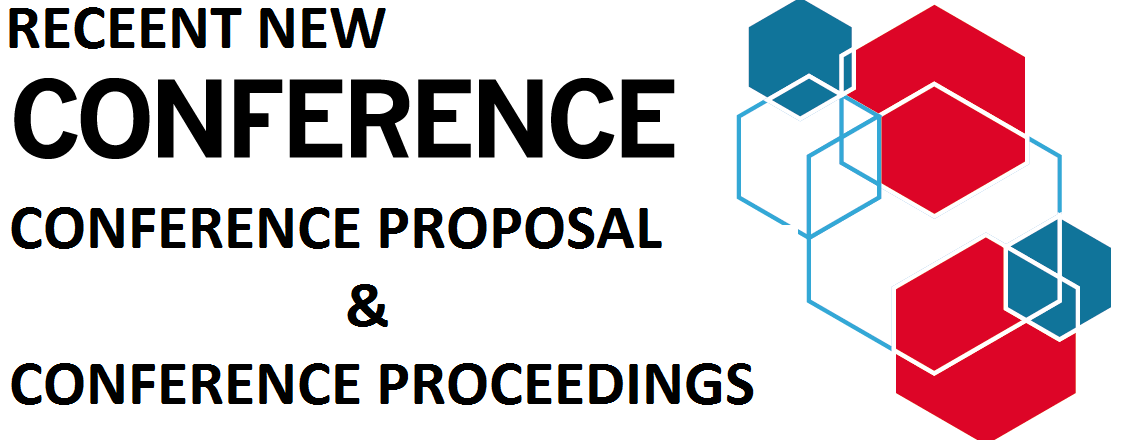
CONFERENCE PROPOSAL CONFERENCE PROCEEDINGS




